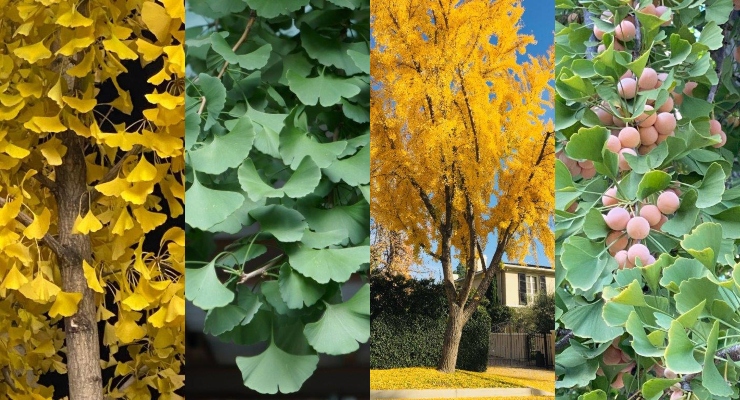
Each month, Pasadena Beautiful Tree Program Chair Emina Darakjy presents a ‘tree of the month’ in order to educate Pasadenans about the trees around them. Many people drive by trees they admire but have no idea what they are called or what their growing habits are. Pasadena Beautiful was founded in 1960 by a group of volunteers who saw a need to beautify their city and enhance its tree canopy.
This tall, slow growing deciduous tree, can reach a height of 50 to 80 feet with a spread from 25 to 40 feet.
When the tree is young, the trunk bark is light gray, becoming darker with irregular furrows as the tree matures. The leaves are flat and fan shaped. They begin as bright green in the summer, gradually turning to yellow in the fall, before dropping like brilliant golden snowflakes, carpeting the ground underneath. It is a beautiful sight to see.
The ginkgo flowers are unnoticeable but fragrant. The female variety produces fruit that looks like small plums that drop when ripe and are slippery, and can have a foul smell when crushed by people walking on them.. To avoid the danger of slipping on the fruit, make sure you plant only male grafted cultivars.
The fruit is, however, considered a delicacy in Asia, where the inside seed is roasted before it is consumed.
The Ginkgo adapts to any soil conditions, withstands air pollution, and is drought tolerant. It grows in partial shade but does better in full sun, and is not recommended underneath power lines.
The Ginkgo can be found as a street tree, in medians, and in parks. When given ample room to grow, the tree exhibits wide spreading branches. If space is tight, try and plant something called “Fairmont,” which grows in a conical form, or the “Princeton Sentry,” which has an even narrower column-like shape.
Ginkgo trees do not require a lot of maintenance. They can benefit from some light spring pruning when young, but hardly need any when mature. The Ginkgo tree also does not have any significant known pest problems, and is resistant to oak root fungus.
It is also worth noting that the Ginkgo is considered one of the oldest living trees. Research and fossil records show that the Ginkgo existed during the Jurassic period millions of years ago.
Emina Darakjy is the current president of the California Urban Forests Council and the Tree Program Chair of Pasadena Beautiful. Darakjy says she has always had a passion for trees and that she is also involved with several other tree organizations such as California Re-Leaf, the Arbor Day Foundation and American Forests. She is an immediate past president of Street Tree Seminar Inc.












